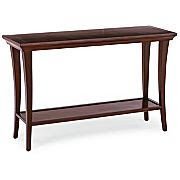
I'm so excited to have discovered Spoonflower, a fantastic site that allows users to design their own fabric. I'm not talking send in a photo of your pet salamander and they'll print it on a t-shirt for you. I'm talking today you wake up and you're a textile designer, and you can order yards and yards of your own unique custom fabric from which you can make fabulous throw pillows.
 You can draw or paint your design by hand and then scan it into the computer, or design it directly on your computer (using Photoshop, for example). The site is very user-friendly (and a little bit addictive, I might add). Uploading your design is a snap. Prices start at $18.00 per yard, and swatches are available for $5.00. The most challenging part is creating a design that works in a repeat pattern. Design Sponge offers an excellent tutorial for drawing a repeat pattern (by hand) here.
You can draw or paint your design by hand and then scan it into the computer, or design it directly on your computer (using Photoshop, for example). The site is very user-friendly (and a little bit addictive, I might add). Uploading your design is a snap. Prices start at $18.00 per yard, and swatches are available for $5.00. The most challenging part is creating a design that works in a repeat pattern. Design Sponge offers an excellent tutorial for drawing a repeat pattern (by hand) here.
Don't the possibilities make your head spin?! Beyond just the general coolness of DIY fabric as a concept, a few specific applications come to mind:
You can design a themed fabric for a nursery or a child's room:

Or incorporate a child's original artwork into a fabric:

You can design a fabric that showcases your own personal obsessions, be they Scottie dogs, cupcakes, or...cuckoo clocks:

Or design a fabric that includes custom colors that you can't find at the fabric store:

While we're on the subject of color, a great resource to have in your graphic design toolbox is Instant Eyedropper. This tool is freeware, and it allows you to find the color code for any color on your computer screen just by rolling your mouse over the text or image. It was created for web designers, but I think that it could also come in handy in all of your computer-related design escapades.
See a paint or fabric swatch that you like online? Roll over it, write down the color code, and incorporate that color into your custom fabric. Yes, computer monitors will alter your perception of the color a bit, but at least you'll be in the ballpark. And with Spoonflower offering $5.00 swatches, you can afford to tinker until you get the color just right. Cool, no?
The Spoonflower fabric images shown here are (listed from top to bottom) :
Fleur de Cuillere by Heather Dutton
Alphabet Red Lime by Deanna
Jam Tart Baby Fabric 2 by Christina Romeo
Ferocious Jungle 2 by Emily Burger
Max Miaow/Woof by Lisa Kingston
Cuk3 by Heidi Kenney
Green and Blue Flowers by Susanne Karlsson
This post has been linked to Works for Me Wednesday @ We Are THAT Family and Hooked on Fridays @ Hooked on Houses.












